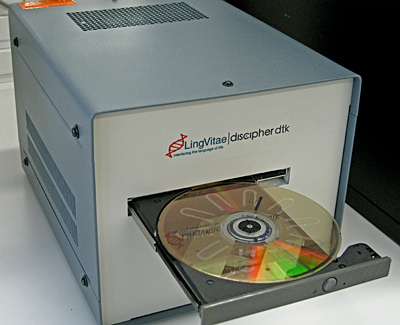Cheap and quick HIV testing made possible with DVD scanners
Global health
Video streaming and USB sticks have rendered DVD players are all but obsolete. But their cheap optics may find a new life in a cost-effective and speedy technique for on-the-spot HIV/AIDS testing and other analytics.
Aman Russom, senior lecturer at the School of Biotechnology at KTH Royal Institute of Technology in Stockholm, says that his research team converted a commercial DVD drive into a laser scanning microscope that can analyse blood and perform cellular imaging with one-micrometre resolution. The breakthrough creates the possibility of an inexpensive and simple-to-use tool that could have far-reaching benefits in health care in the developing world.

“With an ordinary DVD player, we have created a cheap analytical tool for DNA, RNA, proteins and even entire cells,” says Russom. The so-called "Lab-on-DVD" technology makes it possible to complete an HIV test in just a few minutes, he says.
In a proof of concept demonstration, the researchers collected cell-type CD4 + from blood and visualized it using the DVD reader technology, DVD LSM. Enumeration of these cells using flow cytometry is now standard in HIV testing, but the practice has been limited in developing countries. Russom says DVD-based technology will provide an attractive option.

The Lab-on-DVD reaps 30 years of research and development on optical storage technology to create an alternative to flow cytometry, the standard equipment for hospitals. Flow cytometry units can cost upwards of USD 30,000, excluding maintenance. By contrast, mass-produced Lab-on-DVD units could be made available for less than USD 200, Russom says. And unlike the bulky and technically-complex flow cytometry instruments, a Lab-on-DVD would be portable and require less training to operate.
“The low cost of the technology makes it suitable as a diagnostic and analytical tool in clinical practice close to the patient,” Russom says. “And because it delivers extremely fast analysis, the patient does not need to go home and wait for a response. They can get it right on the first visit to a doctor.”
The research was partly funded by the EU Seventh Framework Programme, FP7. The researchers' work was highlighted by Nature Photonics (impact factor 29) in April: http://bit.ly/105rt31
For more information, contact Aman Russom at +46 (0) 70 950 96 84 or aman@kth.se.
Peter Larsson